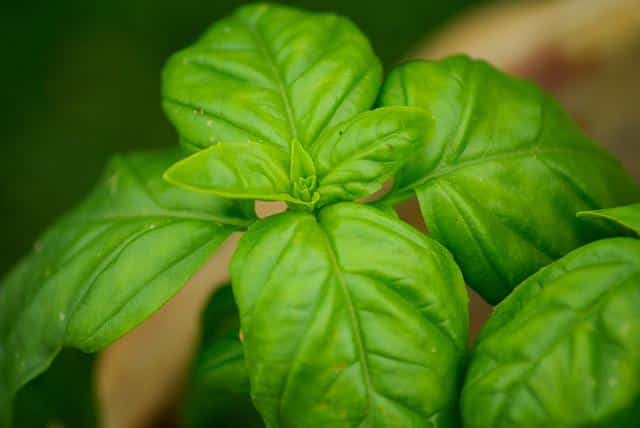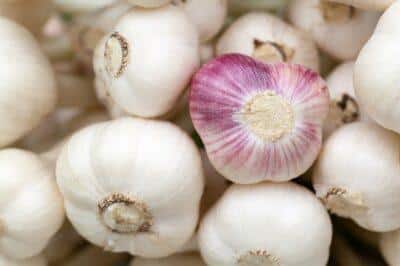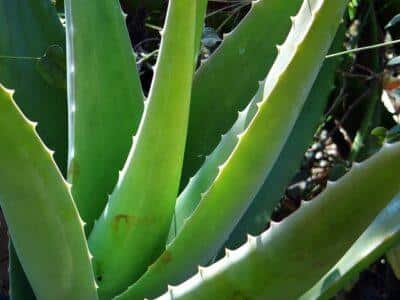|
Listen To The Article
|
As people increasingly seek healthy diets and lifestyles, many are also looking to herbs as a way to support their health naturally. We are currently in a time of rediscovering the wisdom of our ancestors and realizing that herbs can support our health in holistic ways.
You can buy herbs, but it can be difficult to know the quality and whether they are truly organic. Also, you never know when your favorite herbal supplier might run out of stock.
You can easily grow herbs yourself in your own garden, or on your patio or indoors at a fraction of the cost of purchasing them from a store or supplier. And, just as with growing your own fruits and vegetables, you can choose which varieties of super and medicinal herbs that you want to grow.
Growing our own super and medicinal herbs is a great way to provide some personal health resilience for ourselves and for our families, and it empowers us to take control of our own health.
Once you grow your own herbs, you can create all sorts of great herbal remedies from the comfort of your own home.
1. Tulsi (holy basil). Used in traditional Ayurvedic medicine in India for thousands of years, tulsi is a powerful adaptogenic herb and tonic that is healing to the entire body. It can be used on a daily basis for overall health in many different ways, including supporting a healthy immune system; naturally boosting energy and vitality; reducing inflammation; assisting with detoxification, stress reduction, digestive support; and supporting healthy brain, liver and heart function.
New “Survival Herb Bank” Gives You Access to God’s Amazing Medicine Chest
Tulsi is delicious when harvested fresh from the garden and used as a tea, in fresh salads, stir fry dishes, and much more. It also can be used to make homemade herbal remedies such as tinctures and herbal vinegars, and it can be ground up and put into capsules for easy travel.
How to grow tulsi:
For such a powerful herb, tulsi is very easy to grow. Just like other members of the mint family, tulsi will produce many seeds that can be used for future growing seasons and for sharing this lovely herb with friends.
Tulsi is a tender perennial that is often grown as an annual in temperate climates. Like other varieties of basil, tulsi is very frost intolerant, requires consistent warm temperatures (77-86 degrees Fahrenheit) to thrive, and also prefers full sunlight.
Tulsi can be grown indoors throughout the year. Tulsi plants can be transplanted into pots and placed in a bright and a sunny spot that gets 6-8 hours of sunlight per day.
2. Lemongrass. Lemongrass has many health benefits, including supporting healthy digestion; providing a defense against infections; supporting the immune system and a healthy respiratory system; cleansing the body; and supporting healing from cancer and a healthy nervous system.
Lemongrass is also useful as a natural insect repellant.
Lemongrass is commonly consumed as a tea and as a tincture, and is often used in Thai cuisine.
How to grow lemongrass:
Lemongrass is a tender evergreen perennial that is frost intolerant. Therefore, it must be grown indoors throughout the year, or grown as an annual in temperate climates. Lemongrass does best in moist and fertile soil and does well in pots.
Lemongrass can be purchased as transplants or sown as seed. The seeds are sown directly on the surface of the soil and then pressed into the soil. The soil should be kept moist and in light until germination occurs. Germination of lemongrass can take 1-3 weeks.
3. Gynostemma (Jiaogulan). An adaptogenic herb known in China as “poor man’s ginseng,” gynostemma is a climbing vine plant that helps the body to thrive under stress.
Gynostemma has many health benefits for the body, including promoting longevity and vitality, and fighting microbes, toxins and wastes that have accumulated in the body. It also supports a healthy digestive system; eases pain; supports the immune system, a healthy heart and healthy blood pressure; and eases inflammatory conditions.
Gynostemma is typically consumed as a tea or an herbal tincture, and placed in capsules.
How to grow gynostemma:
Gynostemma is a short-lived perennial that has a hardiness of zones 8 to 10, but it can also be grown in pots inside year-round.
Looking For Non-GMO Herb Seeds? Get Them Here …
To start gynostemma from seed, the seeds must be soaked for 24 hours in a covered container with warm water, and then planted in a pot containing moist seed-starting mix. Plant three seeds in each pot about an inch apart, as gynostemma seeds can exhibit inconsistent germination. Then, lightly sprinkle the seeds and barely cover them.
The seeds should sprout in soil temperatures in the low 70s within a period of two to six weeks.
After sprouting, the seedlings can be kept under a grow light for a minimum of 12 hours per day or in an east- or west-facing windowsill.
Gynostemma seedlings can be planted outside in early summer in well-drained, humus-rich partially shaded conditions, and typically require a trellis or arbor due to the sprawling growth habit of this vine plant, which can be up to 25 feet. Mulching with compost helps to maintain the moist conditions that this plant needs to thrive. Beyond that, little care of this plant is required except for the occasional watering.
4. Garlic. Garlic is a great herb to help the body fight off infections such as colds or the flu, as well as supporting healthy digestion. Consuming garlic boosts the body’s immune system and acts as a potent antiseptic against various types of infections, including parasites. Garlic also supports healthy blood cholesterol levels and helps to lower blood sugar levels.
How to grow garlic:
Garlic grows best in well-drained rich soil with a pH of 4.5-8.5, and in full sun. Cloves should be planted with the pointed ends up at two inches deep and six inches apart. Plant the cloves in the fall to harvest in late summer or in early spring to harvest your garlic in late fall.
Harvest the garlic when the plant’s blooms die and the leaves fall over.
Caution: For some, too much garlic can be irritating to the stomach, so exhibit caution if you have a sensitive digestive system.
5. Ginger. In addition to ginger’s effectiveness for nausea and other digestive discomfort, it can be used to reduce inflammation and helps to heal joints and cartilage tissue, and also helps to treat arthritis and joint pain. Ginger can help to soothe menstrual cramps and PMS, and also contains antiseptic properties that can help to treat gastrointestinal infections.
How to grow ginger:
Ginger is native to hot and humid habitat, and thrives in moist soil. It can be grown year-round in a pot inside in full sunlight. During the cooler and drier winter conditions, ginger will go dormant.
To plant ginger, plant a piece of ginger root shallow with one or two growing nubs in the soil. Planting too deep will lead to a rotting of the root.
Make sure that the soil stays moist. Keep the planted ginger in a sunny spot, and the rhizomes should be ready to harvest within 8 to 10 months.
6. Turmeric. Turmeric is steadily gaining in popularity due to its applications to a variety of health conditions. It is an herb that is well-known for its antioxidant properties, fights inflammation, and supports the immune and digestive systems. Turmeric also supports the liver and gallbladder, helps to maintain healthy cholesterol levels, helps the body to fight bacteria, and shows promise in helping the body to heal from cancer.
The primary part of the turmeric plant that is used in herbal medicine is the root.
How to grow turmeric:
Turmeric is a tropical plant that thrives in warm and moist temperatures, so it will not survive outdoors in temperate climates during the cold time of year. However, it is worth a try to keep it indoors for the winter.
Could This All-Natural ‘Detox’ Capsule Have Extended John Wayne’s Life?
Turmeric can be grown in large pots to accommodate its growth height of 3-5 feet tall.
To cultivate turmeric, plant a turmeric root shallowly in fertile soil and be sure to keep it warm and moist with lots of direct sunlight.
7. Red clover. Commonly found in fields and backyards, red clover is often used to cleanse the blood and decongest the lymphatic system and therefore is especially useful for skin problems such as eczema and psoriasis. Red clover can be taken internally or used externally. It is a useful remedy to help heal respiratory conditions in both adults and children.
Menopausal women will appreciate red clover’s abilities to reduce hot flashes, mood swings and night sweats.
Possible ways to consume red clover (the leaves and the flowers) include making a tincture from it, use it as a tea, add it to salads and smoothies, and use it in soups. The most potent plant compounds from red clover are present when the blossoms are a bright red or pink color (avoid browning blossoms).
How to grow red clover:
Red clover is a perennial that is hardy in zones 4 to 9. This plant is easily grown from seed, and thrives in full sun in loamy and well-drained soil. Red clover attracts and provides nectar for pollinators like honeybees, and can be planted among low-growing herbs in your garden or given its own spot on your lawn.
8. Aloe. Aloe is likely most well-known for its ability to help the body to heal from burns and other skin injuries. Aloe both sooths and repairs the area damaged by burns, as well as helps to prevent scaring. Aloe is useful for other skin conditions such as insect bites and stings, rashes, eczema, acne, skin ulcers, and poison oak and poison ivy rashes.
How to grow aloe:
Aloe transplants prefer warm, sunny and dry conditions, but they will tolerate a number of less-than-optimal conditions. Fairly easy to grow, it primarily needs sunshine, well-drained soil and moderate watering. Aloe can survive outdoors in zones 8 (with protection) and warmer year-round, but in colder climates it must be taken inside to avoid frost.
9. Plantain. Plantain is a common “weed” that has a myriad of medicinal and nutritional uses. It is considered to be a blood purifier as it supports the liver. Among its many uses, plantain is used to help check heavy bleeding and can serve as a remedy for insect bites, stings and boils, and it helps to draw out deep-seated infections when used as a poultice. Plantain can also be used to reduce heavy menstrual bleeding when used as a tea or tincture.
The Hidden Secrets Of Making Herbal Medicines…Right At Your Fingertips!
Because plantain is so nutrient-dense and contains protein, starch and many different vitamins, plantain can be used as an emergency food source.
How to grow plantain
By tilling up a little soil in your yard and then left to sprout in the full sun, it will likely reveal itself.
If you cannot find plantain in your own yard or elsewhere on your property, it is likely that your neighbor’s yard (or sidewalk cracks, on the beach, in meadows, or in other wild places) will have some that you can source ripe seeds from which to grow a patch. Just till up some soil, sprinkle the seeds, and it will show up the following year.
10. Lemon balm. Lemon balm is a very potent member of the mint family and is used to aid those who have depression and anxiety symptoms. It also facilitates healing of the heart; infections caused by viruses and bacteria; insomnia; and calming of the nervous and digestive systems.
Lemon balm can be used as a tea, made into tinctures and capsules, and it is also delicious when used as a culinary herb in salads, soups, grains and when added to smoothies.
How to grow lemon balm
Lemon balm is a perennial that is hardy from zones 4 through 9, and as an annual in colder areas. It easily sows itself, so it is easy to get a perennial patch of lemon balm established.
Lemon balm does best in moist and well-drained soil and partial shade, but it can also thrive in full sun. Seeds can be sown directly in the fall or started indoors prior to planting in the spring.
Warning: Lemon balm has been known to inhibit thyroid functioning in some people with thyroid conditions, so if you suffer from such a condition, be sure to use it only under the direction of a health care practitioner.
*Disclaimer: This article is intended for informational purposes only. This information is not intended to serve as a diagnosis or treatment for any particular health condition. Always seek medical guidance from a trusted health care practitioner to determine if the above (or any other) herbs are suitable for your particular health condition(s).
What are your favorite “super herbs” and how do you use them? Share your suggestions in the section below:
Harness The Power Of Nature’s Most Remarkable Healer: Vinegar
 Off The Grid News Better Ideas For Off The Grid Living
Off The Grid News Better Ideas For Off The Grid Living







